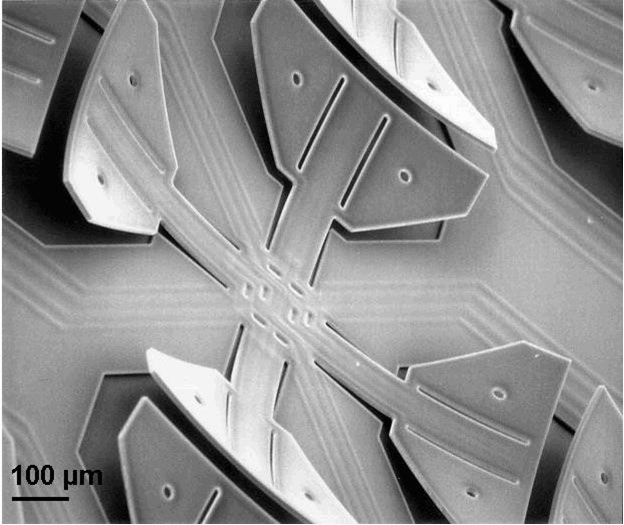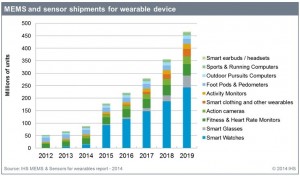
Digital Health: MEMS, wearables, and the future of medical devices
Microelectromechanical Systems (MEMS) are tiny computer chips with moving parts.
Typically used as sensors, but also reversible to make actuators (usually), MEMS technology includes accelerometers, gyroscopes, piezoelectric devices, and microphones, to name just a few. They are the reason our phones know which way is up, our airbags deploy quickly, and technology has become so small so rapidly.
The field of Bio-MEMS is even more exciting and includes sensors for bloodwork, perspiration, UV exposure, and molecular detection.
An article published by the MEMS Journal in 2013 entitled Wearable Sensor Market to Expand Sevenfold in Five Years is proving to be right on the money: this already huge industry is quickly becoming massive. Here are several highlights of the article from a digital health perspective:
466 million MEMS sensors will ship worldwide in 2019, a 700% increase.
This is driven by rising demand for fitness and health monitoring devices that we are integrating into our daily lives much more frequently. Smartwatches, activity trackers, and other personal digital health devices are seeing a growing demand. The number of these devices being sold is growing quickly enough to make headlines, yet the market for the sensors themselves is climbing even faster. One reason for this is that the average wearable device shipped in 2019 will incorporate 4.1 sensor elements, up from 1.4 in 2013.
The MEMS journal predicts a 10 fold explosion in smart watches in the next 5 years.

Health Monitoring is shifting from Smartphones to Wearables
As technology becomes embedded into our daily lives, people are more and more willing to wear a smart watch or smart glasses. These provide the perfect platform for a digital health device, whereas a smartphone has significant drawbacks (mainly that it is usually so far away from the body). Samsung is already integrating a pulse sensor into their wrist band that would be impossible to implement in a smartphone stored in a purse.
The Standards are Being Set
The buildup of digital health devices, which are culminating in the form of a smartwatch, has seen the trial of many different types of data. Despite the availability of sensors for a plethora of parameters, it seems like the market has chosen its favourites. This is shown in the release of the Apple Watch, which may be the tipping point for mass adoption just like we saw in the smartphone and tablet markets. The Apple Watch uses an accelerometer, gyroscope and pulse sensor, as well as a microphone for user interface. It may be that these 4 will become the standard sensors for every subsequent digital health smartwatch.
Sensor Hubs are Becoming More Popular
Sensor hubs offload work from the MPU (micro processing unit) much like a graphics card offloads work from the CPU (central processing unit) in a desktop computer. Skipping a step completely, some developers are already making sensor integrated solutions that include the hub. Logic ICs (integrated circuits), sensor integrated hubs, AP (application processor) integrated hubs and MCUs (micro controller unit) are all promising approaches in this rapidly expanding market. The increasing incorporation of processors onto the sensors themselves drives down system power consumption while potentially making the data more useful and accessible, meaning faster development and cheaper products.

What This Means for the Medical Industry
Typically, new medical devices replace old technology in some form or another, meaning the market size is somewhat predictable. However, the digital health market, especially in relation to wearables, is not growing out of an established market nor is it truly replacing older technology (except perhaps the lowly pedometer). This expanding wearable health sensor market should directly translate – in some proportion – to an expansion in the Medical Device industry. It also means better access to information for patients, more options for health care providers, and new tools for medical device designers. We are entering a whole new era in information accessibility, and you bet we will be taking advantage of it.
Nigel Syrotuck is a Project Engineer at StarFish Medical. Though he can’t see the tiny actuators in MEMS, he can see why engineers worldwide are excited to see the market explode in the next 5 years.
Learn key success factors in designing, developing wearable medical devices plus the importance of selecting appropriate adhesives.
